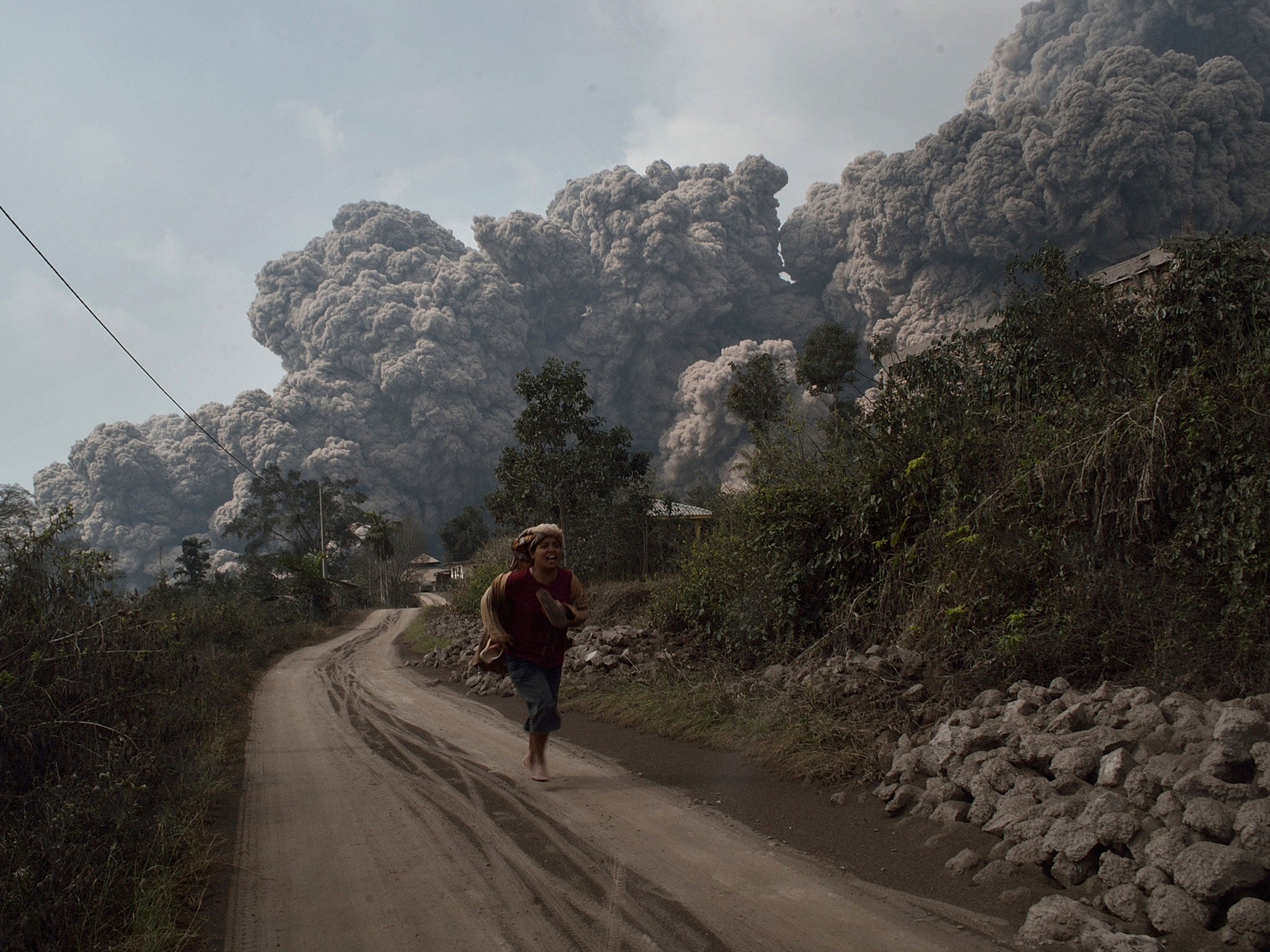At least 14 killed after Mount Sinabung volcano erupts in Indonesia

Your support helps us to tell the story
From reproductive rights to climate change to Big Tech, The Independent is on the ground when the story is developing. Whether it's investigating the financials of Elon Musk's pro-Trump PAC or producing our latest documentary, 'The A Word', which shines a light on the American women fighting for reproductive rights, we know how important it is to parse out the facts from the messaging.
At such a critical moment in US history, we need reporters on the ground. Your donation allows us to keep sending journalists to speak to both sides of the story.
The Independent is trusted by Americans across the entire political spectrum. And unlike many other quality news outlets, we choose not to lock Americans out of our reporting and analysis with paywalls. We believe quality journalism should be available to everyone, paid for by those who can afford it.
Your support makes all the difference.At least 14 people have been killed in a catastrophic volcanic eruption in Indonesia, just a day after authorities allowed thousands of villagers to return to their homes on its slopes.
Residents in the “danger zone” around Mount Sinabung in North Sumatra, which had been rumbling for months, had been evacuated for their safety but were told that activity was decreasing before the eruption on Saturday.
The 8,530ft volcano spewed lava and searing gas, sending rocks and burning ash raining down its southern slopes.
Televison footage showed pyroclastic flows of hot gas and rock reaching up to three miles away and villages covered in thick grey ash.
A local television journalist and four high-school students with their teacher, who were visiting the mountain to see the eruptions up close, were among the dead, according to National Disaster Mitigation Agency spokesman Sutopo Purwo Nugroho.
At least three other people were injured and authorities fear the death toll will rise.
Authorities in western Sumatra had evacuated more than 30,000 people, housing them in cramped tents, schools and public buildings but many had been desperate to return to check on homes and farms.
On Friday, the government allowed nearly 14,000 people living outside a three-mile danger zone to return home after volcanic activity decreased.
Some living close to the peak have been returning to their homes over the past four months despite warnings.
Following the eruption, all those who had been allowed to return home were ordered back into evacuation centres.
“The death toll is likely to rise as many people are reported still missing and the darkness hampered our rescue efforts,” said L. Col Asep Sukarna, who led the operation to retrieve the charred corpses some two miles from the volcano's peak.
Indonesia is prone to seismic activity due to its location on the Pacific “Ring of Fire,” an arc of volcanoes and fault lines.
Mount Sinabung is among about 130 active volcanoes in Indonesia and has sporadically erupted since September.
In 2010, 324 people were killed over two months when the country’s most volatile volcano, Mount Merapi, roared into life.
As in Sinabung, authorities struggled to keep people away from the mountain.
Scientists monitor Merapi, Sinabung and other Indonesian volcanoes constantly, but predicting their activity with any accuracy is almost impossible.
The latest eruptions came just a week after President Susilo Bambang Yudhoyono visited displaced villagers in Sinabung and pledged to relocate them away from the mountain.
Villagers are attracted to the slopes of volcanoes because the eruptions create fertile soil for farming.
Additional reporting by AP
Subscribe to Independent Premium to bookmark this article
Want to bookmark your favourite articles and stories to read or reference later? Start your Independent Premium subscription today.
Join our commenting forum
Join thought-provoking conversations, follow other Independent readers and see their replies
Comments